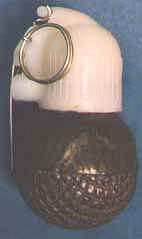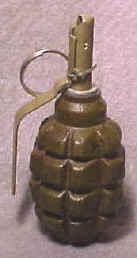the VDV seems more for brute force as a main drop force with a spetznaz element screening the main drop,
Don't know of any airborne force that lands behind enemy lines to plant flowers...

The VDV is better equipped with armour which gives them more independence when they get to ground... one of the dangers for airborne forces once they land is their vulnerability to artillery... armoured vehicles address that while at the same time give mobility and firepower where needed to deal with harder targets and better defended positions.
not to mention most of the russian weaponry can fire NATO ammo but not the other way around.
Apart from mortars in the 120mm range I don't know of any Russian weapons able to use NATO standard ammo.
West para's seem more focussed on infiltrating and making their way to their targets undetected,
Two points... neither side wants to be detected, but the west seems more focused on infiltrating rather than para dropping.
This is largely because the standard scenario for the west in europe is a massive Soviet/Russian invasion of Europe... which means huge air drops are not needed... it is easier to use paras as stay behind forces... guerilla forces.
Ironically this means that the Soviet/Russian VDV model of more aggressive airborne forces would actually suit NATO and the US much better in their little colonial conflicts around the place.
[qutoe]we used grenades that do not use shrapnell to kill (defensive) but offensive grenades that use pressure to kill.[/quote]
Yes, the Russians have the RGO and RGN hand grenades, while previous models were the F-1 and RGD-5... see below:




For those not familiar the attack grenades have smooth outer shells and have very small high velocity fragments with a very short effective range so you can throw it from out in the open into trenches or at the feet of the enemy. The defensive grenades have much larger fragments that are fewer in number of course but have more energy and are effective to much greater ranges that must be thrown from behind cover because the fragments are generally dangerous to greater distances than the grenade can be thrown. The smooth and bumpy feel of them is a warning to the soldier to not use the wrong type.
(Note the RGO and RGN have time and impact fuses)
a cruise missile in an european reactor? Razz. you saw the russians sending in wave after wave with Tsjernobyl to plug the gap right?.
In WWIII worrying about a little radiation will be the least of an attacking armys concern... the soviet military had NBC suits and equipment to ensure they will be less effected by any radiation than the local population.
Besides a few explosions nearby should be enough to get the staff to shut the reactor down properly anyway.
i think Fukushima demonstrated again nuclear power is something we barely can control if some systems get damaged.
Fukushima showed that 1960s US reactors aren't as safe as they like to pretend they are.
i personally would never either attack a nuclear facility or launch an nuclear ICBM for that matter.
I can assure you my feelings are the same... I have no love for death and destruction.
you would not believe the discussion i had in Arizona's Titan missile museum.
You can't visit the Pope and expect him to agree that the best policy is atheism...
You'd have better luck telling them Jesus wasn't American....

in the west we usually got 1 FAC- soldier per platoon, im not sure how the VDV has it tough.
Perhaps Vlad could tell us... but I suspect the sudden influx of sophisticated aircraft with guided air to ground weapons... and also even laser guided artillery ammo... the need for FAC is only going to get bigger. ...remember the VDV have NONA 120mm mortar vehicles... so a 120mm guided GRAN round would be very useful and available at all times to the units it is operating with... VENA or similar vehicles only expand the potential... and of course the influx of UAVs and UCAVs is going to mean targets could be marked from the air organically with the VDV unit almost self sufficient with recon and artillery support.
A short while back there was a photo of a Tigr with a mortar mounted on its rear... systems like the Vasilek 82mm automatic mortar able to fire at about 600 rpm with a 4 round clip would rapidly make up for the relatively small 4kg payload with rate of fire and direct fire accuracy. A 120mm mortar with a 16kg payload would be even more devastating.








